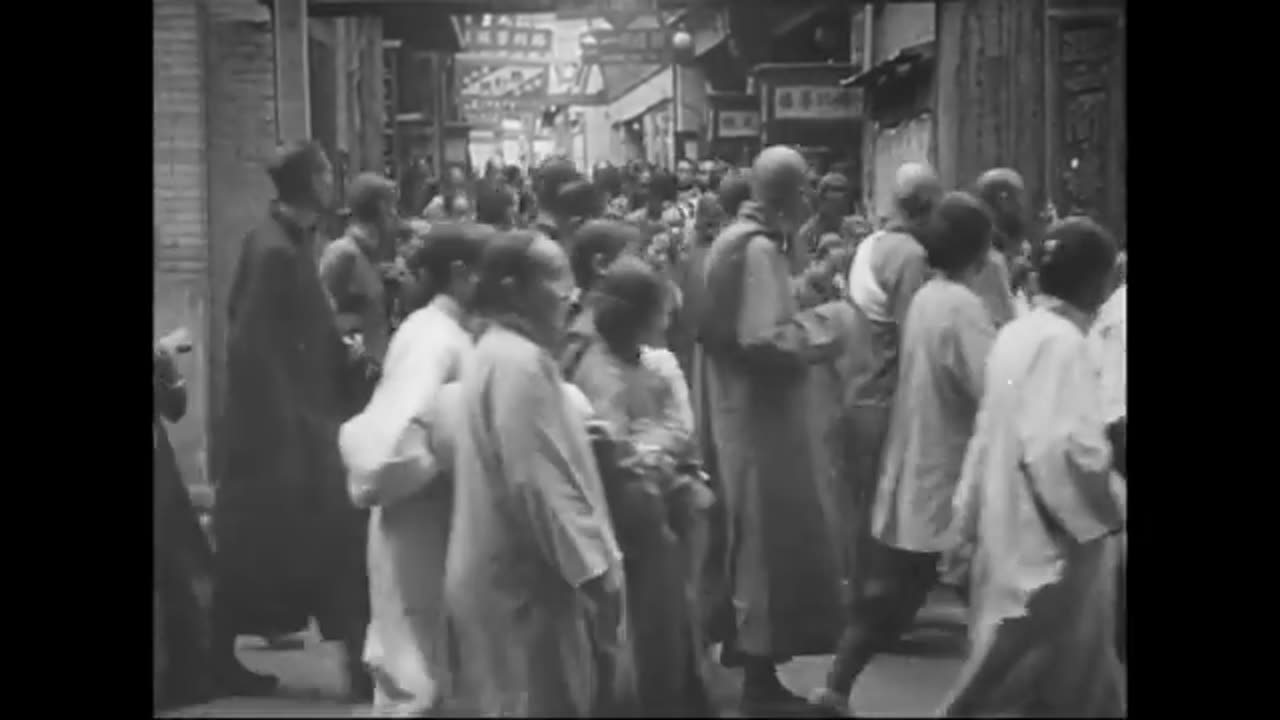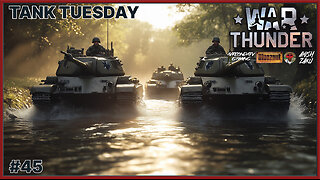Premium Only Content

Why We Fight The Battle of China
This motion picture film explores Japanese aggression. In Reel 1, Japanese planes bomb Shanghai; citizens flee. Describes Chinese development of the compass, printing, astronomy, gunpowder, and porcelain. The reel shows views of the Gobi Desert, sampans, and types of architecture and statuary. Japanese artillery fires and cavalry advances. The reel also describes Japanese plans for world conquest; contrasts Japanese unity with Chinese disunity. Footage also shows Emperor Hirohito. Reel 2 shows Sun Yat-sen and uprisings against the Manchu dynasty. Students go abroad. Hospitals, highways, schools, and factories are constructed. Children play at school. Emperor Hirohito reviews Japanese troops; tanks roll down a street. The reel shows a Japanese munitions factory, a Japanese fleet at sea, troops marching, the Army occupying Manchuria, views of the League of Nations as the action is condemned, the Great Wall of China, the puppet premier Pu-Yi, Japanese attacking Chinese at Marco Polo Bridge in 1937, and Chiang Kai-shek. Reel 3 shows street and harbor scenes in Shanghai, the bombing and naval bombardment of the city, street fighting, and the city's capture by Japanese units. Japanese troops advance toward Nanking. The gunboat Panay is bombed in the Yangtze. The reel also shows fighting in and around Nanking. In Reel 4, the battle continues. Footage describes Japanese atrocities during the rape of Nanking and shows dead and injured civilians. Chinese demonstrate against Japan. Chiang Kai-shek speaks. Hordes of Chinese emigrate to the West carrying their belongings with them. Reel 5 shows the establishment of the new Chinese capitol at Chungking. Air raid shelters are dug; the city is bombed. The reel shows an underground factory, fires being fought, recruits for the Chinese Army, the "Flying Tigers" taking off, and Japanese units occupying the Chinese coast. In Reel 6, coolies repair and expand the Burma Road by hand; trucks move over it. Dikes on the Yellow River are blown up to stem a Japanese offensive on Chengchow. Guerrillas ambush a Japanese patrol. Japanese planes attack Pearl Harbor. Footage shows the Japanese high command. In Reel 7, Japanese units advance against Changsha, their supply lines are cut forcing their withdrawal, and the Chinese infantry advances. Footage shows Generals Douglas MacArthur and Joseph Stilwell. Madame Chiang Kai-shek addresses the U.S. Congress. The Ledo Road is constructed; transport planes fly over "the Hump." The "Flying Tigers" bomb Japanese airfields in China.
Creator(s): Department of Defense. Department of the Army. Office of the Chief Signal Officer. 9/18/1947-2/28/1964 (Most Recent)
Series: Orientation Films, 1942 - 1949
Record Group 111: Records of the Office of the Chief Signal Officer, 1860 - 1985
Production Date: 1944
Other Title(s):Orientation Film, no. 6
Production Series: Title: Why We Fight
Contact(s): National Archives at College Park - Motion Pictures (RDSM), National Archives at College Park, 8601 Adelphi Road
College Park, MD 20740-6001
Phone: 301-837-3540, Fax: 301-837-3620, Email: mopix@nara.gov
National Archives Identifier: 36072
Local Identifier: 111-OF-6
https://catalog.archives.gov/id/36072
Fair Use Disclaimer:
All content that uses public funds by any US government agency, state, or local government is available for worldwide use and reuse under the terms of the Creative Commons CC0 1.0 Universal license. Included within these resources may be copyrighted material(s), the use of which has not always been specifically authorized by the copyright owner. Any copyrighted content used is for educational, research, reporting, commentary, entertainment, informational, and criticism purposes.
In our efforts to provide the Rumble community with quality content that is “fair use,” this content is covered under Section 107 of the Copyright Act ( https://www.copyright.gov/fair-use/ ).
If you wish to use this copyrighted material for purposes that go beyond “fair use,” you must obtain permission from the copyright owner.
If you believe that any copyrighted materials appear in this content and you disagree with our assessment that it constitutes “fair use,” please get in touch with us.
-
 1:04:12
1:04:12
PMG
1 day ago $2.79 earned"I’ll be DRONED for Christmas!"
11.8K2 -
 23:38
23:38
RealitySurvival
1 day agoBest Anti-Drone Rounds For Self Defense
8.08K2 -
 57:43
57:43
barstoolsports
15 hours agoBest Shot Wins The Game | Surviving Barstool S4 Ep. 7
199K9 -
 1:52:24
1:52:24
Kim Iversen
11 hours agoLuigi Mangione Charged With TERRORISM | Liz Cheney Accused Of WITNESS TAMPERING, Faces 20 YEARS IN JAIL
105K142 -
 6:50:10
6:50:10
Akademiks
12 hours agoJay Z says he aint NEVER been friends w/ DIDDY! Bhad Bhabie lost her man? Travis Hunter Down Bad?
110K13 -
 2:27:04
2:27:04
AirCondaTv Gaming
10 hours ago $23.47 earnedWar Thunder - Tankering Around for That 10 Bomb
56.1K5 -
 4:19:05
4:19:05
SpartakusLIVE
13 hours agoThe MACHINE locks in for 12-hour POWER stream
39.3K1 -
 1:58:40
1:58:40
Robert Gouveia
12 hours agoJ6 Coverup: Prosecute LIZ CHENEY; NY Judge REJECTS Immunity; Trump Breaks Gag?
172K77 -
 2:22:06
2:22:06
WeAreChange
10 hours agoPSYOP Spreads: Drones Shut Down Airport In New York!
109K50 -
 1:31:18
1:31:18
Redacted News
13 hours agoEMERGENCY! NATO AND CIA ASSASSINATE TOP RUSSIAN GENERAL, PUTIN VOWS IMMEDIATE RETALIATION | Redacted
248K473